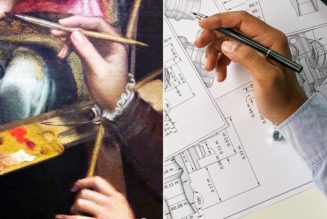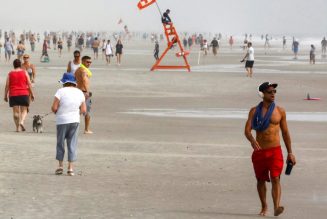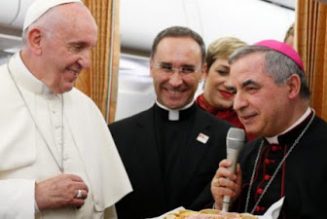ROME – If she’s somehow still alive, today would mark Emanuela Orlandi’s 56th birthday. In the popular mind, however, especially here in Italy, she remains forever fifteen, the age at which she vanished after a music lesson in June 1983, thereby creating the basis for the most celebrated unsolved Vatican mystery of the modern era.
Orlandi, in the phrase made popular by a four-part Netflix series in 2022, was a “Vatican girl” — her father served as a clerk in the Prefecture of the Papal Household, and her family lived in an apartment inside the city-state. Over the forty years since she went missing, her fate has become the Vatican equivalent of the Kennedy assassination, meaning the mother of all mysteries and the focus of a never-ending series of plot twists, purported revelations and conspiracy theories.
As it happens, all indications are that 2024 should be another boom year for the Orlandi industry – because, let’s face it, quite apart from the fate of a young girl and the suffering of her family, the “Orlandi case” has also become big business, generating the sort of book sales, TV ratings and political appeal that guarantee people won’t just leave it alone.
Last November, the Italian Senate joined the country’s lower house, the Chamber of Deputies, in approving a 40-member commission of inquiry into the Orlandi saga, as well as the more-or-less simultaneous 1983 disappearance of another 15-year-old girl named Mirella Gregori. The two cases often are linked, in part because Gregori’s mother once identified a Vatican gendarme as a young man who spent time with her daughter in a neighborhood bar shortly before she went missing.
(A forthcoming book by Italian criminologist Roberta Bruzzone contests such linkage, arguing that efforts to connect Gregori to Orlandi have been a way of misleading investigators, and that the truth is to be found closer to home. Presumably, the new panel will take all that into consideration.)
In January, leaders of both houses of parliament sent letters to members requesting suggestions for the composition of the commission, and the expectation is that it should begin its work in February. It’s to have an annual budget of $50,000, and its mandate is tied to that of the current legislature, meaning that will have until December 2027 to complete its probe – unless, of course, the government falls in the meantime and parliament is dissolved, which, in Italy, is never out of the question.
All that suggests that the Orlandi mystery will once again be in the headlines throughout 2024, as the parliamentary body issues subpoenas, conducts hearings, and collects evidence, not to mention engages in the sort of grandstanding for which politically-conducted inquiries are justifiably famous.
One key player is likely to be center-left Italian politician Carlo Calenda, who heads the “Action” party and who’s already announced he intends to serve on the panel. In a series of interviews in recent months, Calenda has taken up the Orlandi case as a sort of personal crusade, styling it as a litmus test of secular Italy’s willingness to reject “submission” to the Vatican.
In the meantime, the Vatican’s Promoter of Justice, Alessandro Diddi, is conducting his own investigation, as is the chief prosecutor for the city of Rome, Francesco Lo Voi. In a recent media interview, Diddi indicated that his work is going ahead, and, unlike the parliamentary probe, it has no time limit – the investigation remains open until it’s formally closed.
Yesterday, as he does every year on her birthday, Pietro Orlandi, Emanuela’s older brother, staged a sit-in in Rome’s Piazza Cavour in order to maintain public pressure to deliver “truth and justice” with regard to his sister’s fate. The location is symbolically charged, as the piazza is situated between the Vatican and Italy’s Ministry of Justice, suggesting the need for both church and state to be engaged.
As is often the case, Orlandi had some provocative things to say during the course of the sit-in, including floating a new hypothesis about his sister’s final resting place.
It has long been an article of faith for Orlandi that the Vatican knows what happened to his sister but has refused to come clean, a conviction rooted in part in the fact that Pope Francis, for instance, allegedly once told him that Emanuela is “in heaven,” suggesting he knew for a fact that she’s dead.
On Saturday, Orlandi brandished a memo he and the family’s lawyer prepared a year ago for Diddi, containing information they’ve collected regarding the Vatican’s possible role in Orlandi’s disappearance. Among other things, he revealed the memo contains alleged WhatsApp messages between senior Vatican officials in 2014 implying that Emanuels’ remains may have been transported to the Basilica of St. Mary Major under Spanish Cardinal Santos Abril y Castellò, who served as the archpriest of the basilica from 2011 to 2016.
Presumably, this may lead to pressure to open crypts at St. Mary Major, in the same way that tombs were inspected in the Vatican’s Campo Teutonico cemetery in 2019 following a similar lead (in that case, anonymous), with no trace of Orlandi discovered.
In the meantime, it’s worth recalling a previous key moment in this saga, in 2012, when Pietro Orlandi had just published a book on his sister’s case along with Italian journalist Fabrizio Peronaci, arguing among other points that the Vatican needed to come clean. In response, Jesuit Father Federico Lombardi, then the director of the Vatican Press Office, prepared a memo summarizing what the Vatican had done to establish what it knew, and to cooperate with various Italian probes.
Among other points, Lombardi recalled that Orlandi’s disappearance was, sadly, anything but an isolated incident. In fact, Italy long has faced a disturbing phenomenon of unexplained disappearances, to the point that there’s actually a government commission and a national day of awareness, Dec. 12, dedicated to the problem.
According to the most recent government data, there are roughly 88,390 people in the country missing and unaccounted for since 1974, when statistics first started being collected, with almost three-quarters of that total being minors, the majority between 14 and 17.
While a large share of those disappearances involves immigrants, there are thousands of native Italians who have vanished as well. In the region of Lazio alone, which includes Rome, the total is more than 8,000 missing people.
In that context, here’s what Lombardi said a decade ago.
The Orlandi family’s suffering, he said, “unfortunately is revived with every new lead of explanation, so far without any result.”
“Although the number of people who disappear every year in Italy, and of whom nothing more is known despite searches and inquests, is high, it’s the affair of this young and innocent Vatican citizen that continues to be in the spotlight,” Lombardi said.
“That’s not a reason to assign the Vatican a guilt it doesn’t deserve, but rather an occasion to take stock of the terrible, and often forgotten, reality which such disappearances represent, especially of the young, and for everyone, with all their strength, to oppose every kind of criminal activity that may cause it,” he said.
If the new parliamentary commission takes up that suggestion, putting the Orlandi and Gregori cases in the broader context of the country’s disappearances and the untold suffering of families it’s caused, then it could actually generate more light than heat.
Whether that actually happens will from part of the drama of 2024, though we may never see that particular chapter of the story on Netflix.







